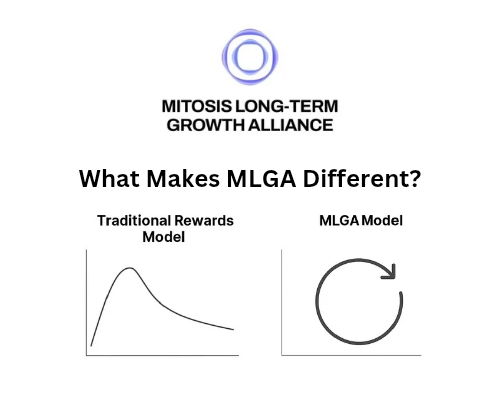Zama and the Future of Web3 Privacy

As the Web3 ecosystem continues to mature, it brings with it the promise of decentralization, transparency, and trust. However, one major issue still looms: privacy. While public blockchains offer open access and verifiability, they also expose transaction data, user activity, and smart contract states to anyone with a node or block explorer.
Zama, a rising force in cryptography, is solving this challenge by bringing Fully Homomorphic Encryption (FHE) to Web3. With FHE, computations can be performed directly on encrypted data, allowing sensitive information to remain private even during processing. This breakthrough has the potential to reshape how decentralized applications handle data, laying the foundation for confidential smart contracts and privacy-preserving protocols.
Introducing Zama
Zama is an open-source cryptography company focused on advancing privacy in blockchain networks using FHE. Unlike traditional encryption models that require data to be decrypted before computation, FHE allows for encrypted data to be processed without ever revealing its contents. This makes it possible to maintain privacy from end to end, including during on-chain execution.
Importantly, Zama’s technology is designed to be post-quantum secure, offering resistance to the future risks posed by quantum computing.
At the core of its offering is the Zama Confidential Blockchain Protocol, which integrates with existing Layer 1 and Layer 2 blockchains such as Ethereum and Solana to add a privacy layer without requiring users to bridge or migrate to a new chain. With a valuation exceeding $1 billion, Zama has emerged as the first unicorn in the FHE space, backed by leading investors including Multicoin Capital, Pantera Capital, Protocol Labs, and Blockchange Ventures. To date, the company has raised over $150 million.
Solving Blockchain’s Privacy Challenge with FHE
Why Privacy Matters
Public blockchains, by design, expose all transaction data to the network. This transparency, while essential for trust, creates real-world limitations. User wallet balances, transaction histories, and smart contract states are visible to everyone, making it difficult to maintain confidentiality for financial applications, personal data, or enterprise use cases.
Zama addresses this problem with confidential smart contracts—programs that run on encrypted inputs and outputs. These contracts allow decentralized applications to process private information securely without compromising on decentralization or composability.
Key Use Cases
Zama’s FHE-based infrastructure unlocks several high-value applications:
- Confidential finance: Enables private trading of tokenized assets like stocks or bonds while keeping investor activity hidden. For example, JP Morgan and Kynexis used Zama’s technology in a proof-of-concept for confidential asset trading.
- Private voting and auctions: Allows encrypted voting systems or blind auctions on-chain to prevent manipulation and ensure fairness.
- Privacy-preserving identity: Creates decentralized IDs and verifiable credentials (VCs) for secure onboarding without revealing personal information.
- Secure on-chain gaming: Maintains encrypted game logic and player moves to prevent cheating and ensure integrity.
- Prediction markets: Keeps predictions hidden until results are revealed to avoid strategic bias and gaming.
In all of these cases, FHE ensures that user data remains protected, even from the infrastructure itself.
Zama’s Technology Stack
Zama provides a suite of open-source tools that make FHE accessible to developers, removing the need for deep cryptographic expertise:
- FHEVM: An extension of the Ethereum Virtual Machine that supports confidential smart contracts. Developers can write contracts in Solidity or Python and work seamlessly with encrypted data.
- TFHE-rs: A high-performance Rust library implementing FHE over the torus, optimized for blockchain workloads.
- Concrete: A Python framework for building encrypted data science pipelines.
- Concrete ML: A toolset for privacy-preserving machine learning, enabling AI models to operate securely on encrypted inputs.
These tools are available under a BSD 3-Clause Clear license for non-commercial use. Commercial deployments require a license, which supports continued development while enabling businesses to build with FHE at scale.
Developers can also join the Zama Confidential Blockchain Protocol testnet, launched in June 2025, to begin building and experimenting with privacy-first decentralized applications.
Ecosystem Growth and Strategic Partnerships
Zama has expanded its reach through strategic collaborations. One key partnership with OpenZeppelin, a leader in blockchain security, focuses on creating secure and auditable frameworks for confidential smart contracts. This collaboration aims to streamline privacy implementation across the Web3 industry.
Another notable partnership is with Galactica.com, a SwissBorg-affiliated project focused on decentralized identity. Together, they are integrating FHE into a Web3-native identity system to offer persistent, private digital identities for apps and services.
Funding, Growth, and Roadmap
Zama’s momentum is backed by two major funding rounds: a $73 million Series A in 2024 led by Multicoin Capital and Protocol Labs, and a $57 million Series B in 2025 led by Blockchange Ventures and Pantera Capital. The company is supported by notable Web3 figures including Solana co-founder Anatoly Yakovenko, Ethereum and Polkadot co-founder Gavin Wood, and Filecoin’s Juan Benet.
Looking ahead, Zama plans to launch its mainnet and token in the fourth quarter of 2025. The live testnet is already open for developers and community members to engage with the technology, explore quests, and prepare for the token generation event.
Community and Vision
Zama has quickly become a talking point in the Web3 community, particularly on platforms like X . Developers and privacy advocates are responding positively to Zama’s approach, which adds a confidentiality layer to existing blockchain infrastructure rather than requiring new chains or trade-offs in performance.
Many users have likened Zama to the Signal of Web3, highlighting its potential to make end-to-end encryption a default across blockchain and cloud services. Zama has even coined the term HTTPZ to describe this new layer of secure internet infrastructure.
The company’s long-term vision is clear: to make privacy a standard, seamless feature of Web3 and beyond.
How to Get Involved
- Developers can explore Zama’s tools on GitHub, try out FHEVM, or join the testnet at zama.ai.
- Community members can sign up for the waitlist, complete testnet quests, and follow @zama_fhe on X for the latest updates.
- Enterprises and builders can reach out at hello@zama.ai to learn about commercial licensing and integration opportunities.
Conclusion
Zama is leading a new wave of privacy innovation in Web3 through fully homomorphic encryption. By enabling encrypted computation on decentralized networks, Zama allows applications to be both private and composable. With powerful open-source tools, strong partnerships, and a clear vision for secure, scalable applications, Zama is redefining what privacy means in blockchain.
As blockchain technology moves closer to widespread adoption, privacy will become an essential rather than optional feature. Zama is poised to play a central role in that evolution.
References













Comments ()